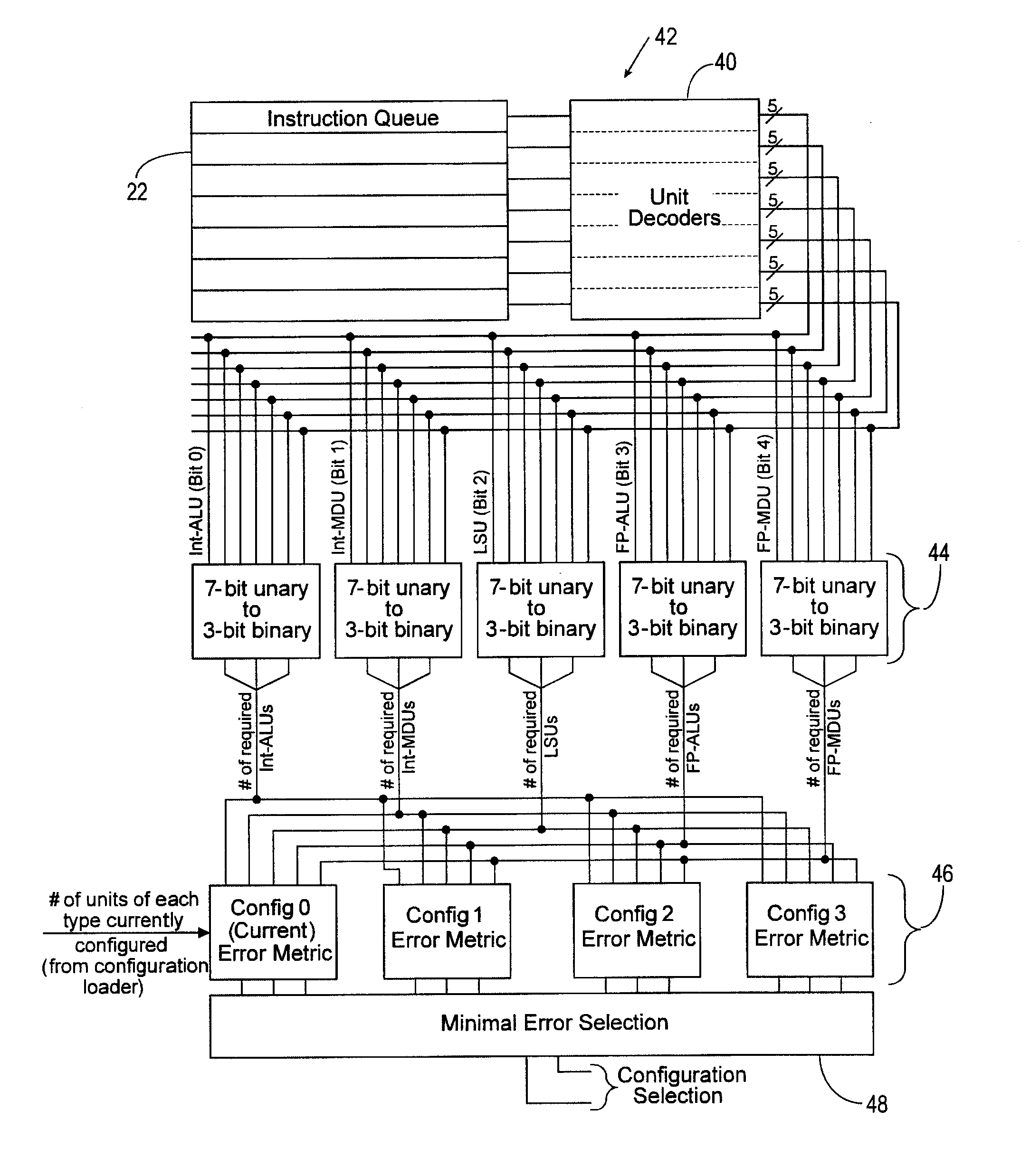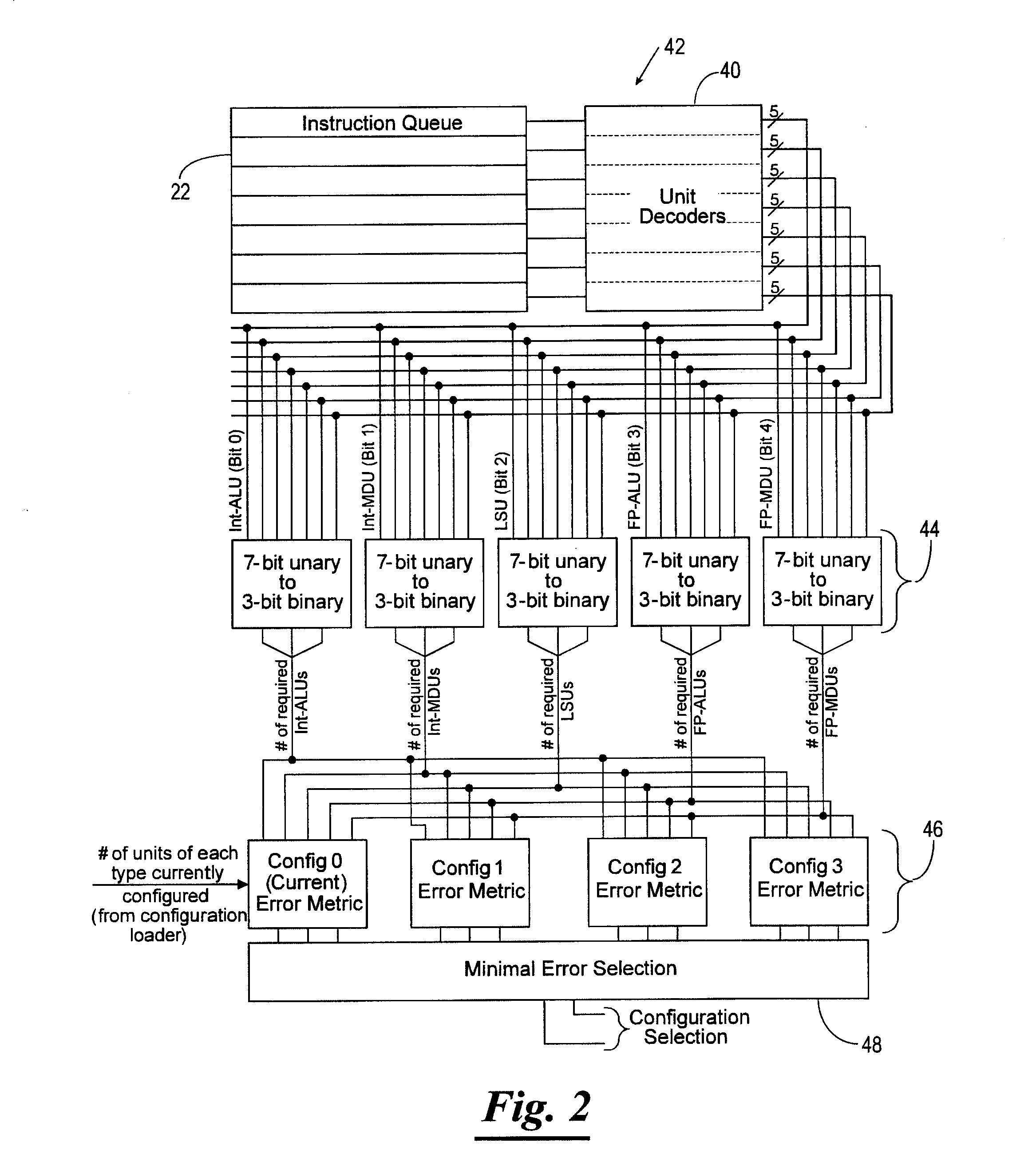Reconfigurable Computing Architectures: Dynamic and Steering Vector Methods
a computing architecture and vector method technology, applied in computing, digital computers, instruments, etc., to achieve the effect of increasing hardware complexity, facilitating future usability, and effectively creating a dynamic priority loading and discarding process
- Summary
- Abstract
- Description
- Claims
- Application Information
AI Technical Summary
Benefits of technology
Problems solved by technology
Method used
Image
Examples
case study
[0212]A general-purpose processor architecture with dynamically reconfigurable functional units was proposed in reference [3]. This basic concept was studied further and extended in references [1] and [2]. For the case study presented in this section, it is assumed that the reconfigurable processor has N=5 slots and that the objective is to design K=2 steering vectors that are well matched to the configurations determined to be important. The specific objective is to exploit as much instruction-level parallelism as possible by being able to reach important configurations, i.e., those configurations that enable as many instructions to be executed in parallel as possible. For example, if it is the case that multiplication instructions can never (or rarely) be executed in parallel, but parallel addition instructions can often be executed in parallel, then the choice of steering vectors 230 should comprehend this reality and enable configurations with two or more adder units to be reach...
PUM
 Login to View More
Login to View More Abstract
Description
Claims
Application Information
 Login to View More
Login to View More - R&D
- Intellectual Property
- Life Sciences
- Materials
- Tech Scout
- Unparalleled Data Quality
- Higher Quality Content
- 60% Fewer Hallucinations
Browse by: Latest US Patents, China's latest patents, Technical Efficacy Thesaurus, Application Domain, Technology Topic, Popular Technical Reports.
© 2025 PatSnap. All rights reserved.Legal|Privacy policy|Modern Slavery Act Transparency Statement|Sitemap|About US| Contact US: help@patsnap.com



